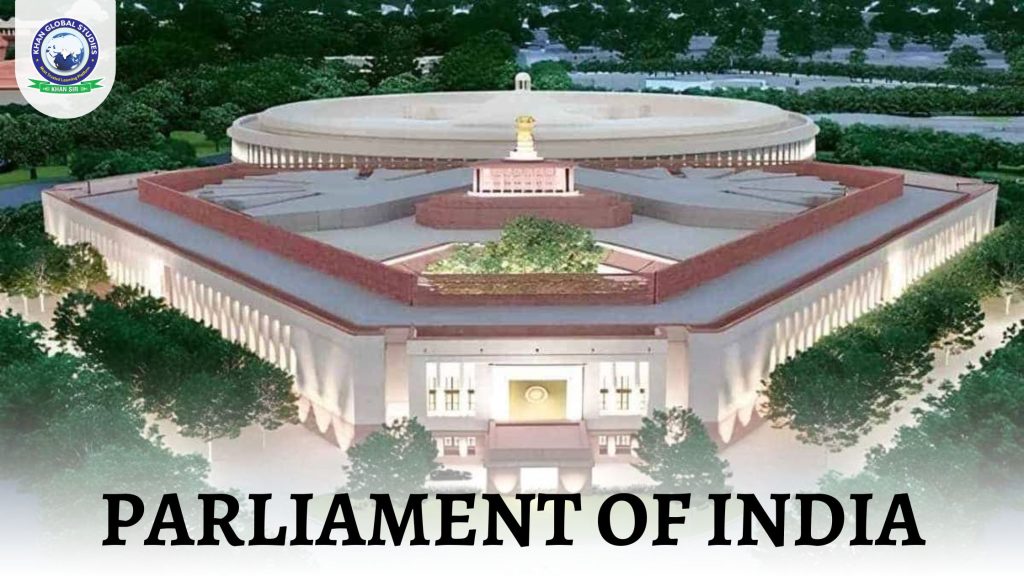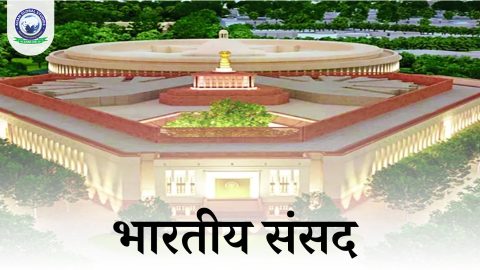The Indian Parliament is an important pillar of India’s democratic structure, which serves as the center of legislative activity in the country. It is where laws are made, policies are formulated and the government is held accountable for its actions. Established by the Constitution of India, the Parliament serves as the supreme legislative body, representing the will of the people. Through the Indian Parliament, the governance of the country is carried out with checks and balances that ensure transparency and fairness.
Brief History of the Indian Parliament
India’s democratic tradition can be traced back to ancient times when panchayats (village councils) were an integral part of community life. These councils handled issues of justice, governance, land distribution and tax collection. They were often larger, connected to smaller councils and were accountable to the people.
In the medieval period, due to wars and invasions, the influence of democratic institutions diminished. However, village councils continued to function in various forms such as village assemblies and town councils.
In 1833, the concept of the Legislative Council was introduced under British colonial rule, which initiated formal legislative reforms in India. The formation of the Indian National Congress in 1885 further advanced parliamentary reforms. With the Indian Councils Act of 1861, legislative powers were gradually transferred to Indians. By 1919, India had established a bicameral legislature consisting of the Council of States and the Legislative Assembly.
The fight for independence saw the rise of the Swaraj Party in 1923, led by Chittaranjan Das and Motilal Nehru, which aimed to contest elections and represent Indians in the legislative councils. The Congress Party actively participated in the legislative process in the Quit India Movement in 1942 and won many seats in the subsequent elections.
After independence, the Indian Independence Act of 1947 granted legislative sovereignty to the Constituent Assembly, allowing it to govern India and draft the constitution. The Indian Parliament was officially established in 1950 with the enactment of the Constitution, which adopted a bicameral parliamentary system based on the British model.
Structure of the Indian Parliament
The Indian Parliament consists of two houses:
1. Lok Sabha (House of the People)
The Lok Sabha is the lower house of the Parliament, directly elected by the people of India. Citizens over the age of 18 can vote in Lok Sabha elections. The maximum number of members in the Lok Sabha is 552, of which 530 represent the states, 20 represent the Union Territories, and 2 can be nominated by the President of India from the Anglo-Indian community.
Members of the Lok Sabha are elected for a term of five years, but in times of national emergency, this term can be extended. Lok Sabha seats are based on the first-past-the-post system, and reserved seats are allocated for Scheduled Castes and Scheduled Tribes to ensure their representation.
2. Rajya Sabha (Council of States)
The Rajya Sabha serves as the upper house of the Parliament. Its members are not directly elected by the public but by the elected members of the state legislative assemblies. The number of members a state sends to the Rajya Sabha depends on its population. The Rajya Sabha can have a maximum of 250 members, 12 of whom are nominated by the President for their contribution to arts, science, literature and social services.
Unlike the Lok Sabha, the Rajya Sabha is a permanent body. Members serve for a six-year term, with one-third of them retiring every two years.
Functions of the Indian Parliament
- Lawmaking: The most basic function of the Indian Parliament is to make laws for the country. This process begins with the introduction of a bill in either house, followed by intense discussion and debate. Once both houses pass the bill, it goes to the President for final approval, after which it becomes a law.
- Financial Control: An important responsibility of the Parliament is to check the country’s finances. The annual budget is presented in Parliament, and the government’s expenditure and revenue collection are closely monitored. Funds can be allocated for various government expenditures only after the approval of the Lok Sabha.
- Government Monitoring: Parliament also plays an important role in monitoring the actions of the government. It holds the government accountable for its policies and decisions through various methods, including question hour, debates, and committees. This system ensures transparency and keeps the executive in check.
- Addressing Public Issues: Through Parliament, representatives voice the concerns and problems of the people. Members of Parliament (MPs) raise issues from their constituencies and put pressure on the government to work in the public interest. They ensure that government policies are formulated for the benefit of citizens and their implementation is effective.
Parliamentary Sessions
The Indian Parliament meets in three sessions each year:
- Budget Session
- Monsoon Session
- Winter Session
During these sessions, MPs debate and discuss legislative proposals and the workings of the government. Both houses participate in passing bills, policy debates, and other legislative activities. Parliamentary debates are the cornerstone of India’s democratic process, ensuring that different viewpoints are considered before any decision is made.
Role of the President in Parliament
Although the President of India is technically part of Parliament, he does not sit in either House. However, the President plays an essential role by summoning Parliament, giving assent to bills, and addressing Parliament at the beginning of each session year.
When Parliament is not in session, the President can issue ordinances that have the force of law until Parliament resumes. Some bills, especially those relating to financial matters, cannot be introduced without the President’s recommendation.
Prominent Members of Parliament
Members of Lok Sabha
The members of Lok Sabha are directly elected by the people of India, representing various political parties, regions, and communities. The Prime Minister is usually a member of the Lok Sabha, who leads the government with the support of the majority.
Members of Rajya Sabha
The members of the Rajya Sabha represent the states and union territories of India. The Vice President of India is the ex-officio Chairman of the Rajya Sabha, while the Deputy Chairman is elected from among the members of the Rajya Sabha.
Conclusion
The Indian Parliament is the cornerstone of India’s democracy. It not only makes laws and monitors the government, but also ensures that the administration runs in a manner that serves the people. The functioning of Parliament revolves around transparency, debate, and discussion, making it a vital component of the country’s governance.
Frequently Asked Questions
Question: How many houses are there in the Indian Parliament?
Answer: The Indian Parliament consists of two houses – Lok Sabha and Rajya Sabha.
Question: What is the tenure of the members of Lok Sabha?
Answer: The tenure of the members of Lok Sabha is 5 years.
Question: What is the tenure of the Rajya Sabha?
Answer: Rajya Sabha is a permanent house, its members are elected for 6 years and one-third of the members retire every two years.
Question: What is the main function of Parliament?
Answer: The main function of Parliament is to make laws, monitor the activities of the government and control financial matters.
Question: When was the Indian Parliament formed?
Answer: The Indian Parliament was formed in 1950 when the Indian Constitution came into force.
Question: What is the responsibility of Parliament towards the public?
Answer: The responsibility of Parliament is to raise the problems of the public and ensure that the government works in the public interest.
Question: What is the difference between Parliament and Upper House?
Answer: The Upper House is the one in which the members are directly elected by the people, while the Lower House is the one in which the members are directly elected by the people.




